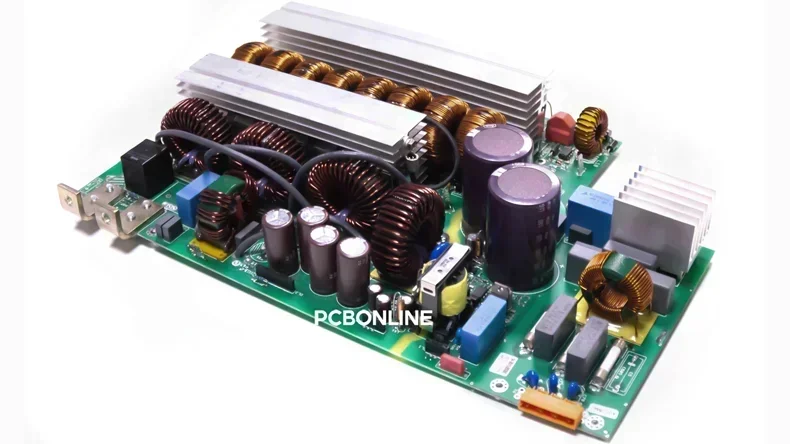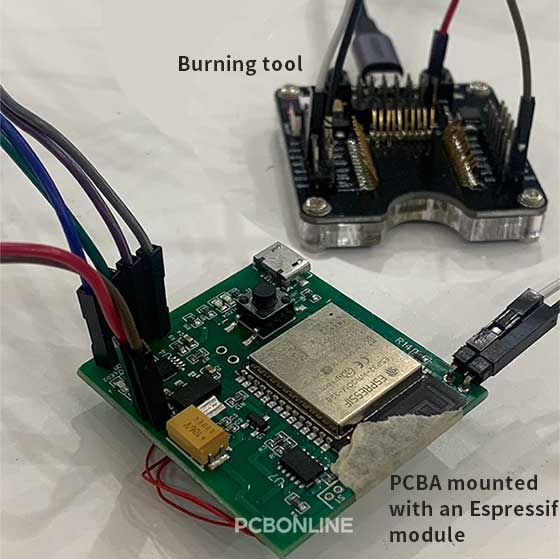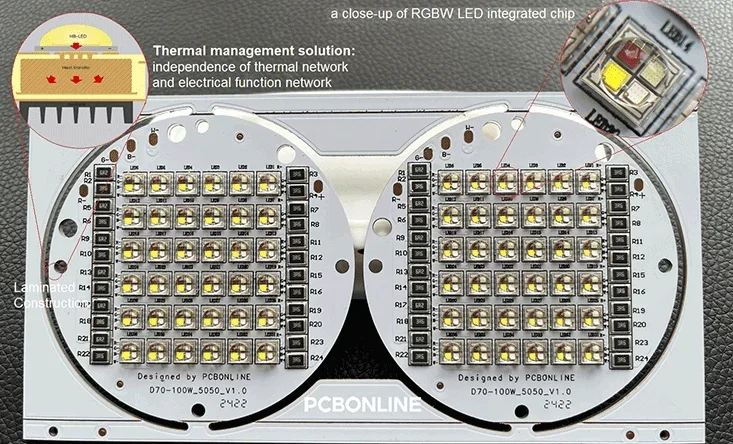
Industrial PCB assembly is used for manufacturing high-end devices for industrial-level applications, such as industrial controls, high-lumen LED lights in extreme environments, industrial cameras for public transportation, high-current PCBAs for solar energy systems, etc.
How do you know if your industrial PCB design has no issues and if the industrial PCB assembly can lead to success? You will need DFM (design for manufacturing) from your PCBA manufacturer, who not only manufactures but also participates in R&D for your project in the early stages.
Want to explore the secrets behind the success of industrial PCBA OEM (original equipment manufacturing) and ODM (original design manufacturing) projects? This blog shows several industrial PCB assembly examples for you.
Industrial PCB Assembly

Before the definition of industrial PCB assembly, let's first understand what industrial grade is.
Industrial-grade means the device is for business use for many people, such as public lighting, transportation cameras, etc. While commercial-grade means the device is used for only a few people, such as home LED lighting, smart home appliances, etc.
Industrial PCB assembly is the electronic assembly for industrial-grade devices. It has strict manufacturing requirements because of the need for high reliability, excellent performance, and long service life.
The features of industrial PCB assembly include:
- High acceptance standard- Industrial PCB assembly needs to follow IPC-A-610 Class 3, which is applied for products requiring high reliability and performance.
- Focus on thermal dissipation- Industrial devices usually need to flow high currents or have components that generate lots of heat during long work periods. Thus, industrial PCB design and assembly focuses on thermal dissipation.
- Quality consistency- Industrial PCB assembly requires strict quality consistency as the products are used for applications that matter to the order conduct of public life and important economic activities.
- DFM and scalability- An industrial PCB assembly project usually goes to bulky production in the end. To avoid economic losses due to potential issues in the design or BOM (bill of materials), all industrial PCB assembly projects should be checked with DFM before and during prototyping and product sampling.
- Materials for industrial PCB- Industrial PCBs need to deal with high power or thermal dissipation due to long-period work. The PCB substrate materials for industrial PCBs include high-Tg FR4, FR4-copper hybrid, ceramic, aluminum, and copper. They can withstand the thermal and dissipate it without overheating the board.
DFM for Industrial PCB Assembly
After the industrial PCB layout, there's a step called Design Rule Check (DRC) by you to ensure the design's integrity and manufacturability. For important projects, you may even run the project on a breadboard by installing all components and parts connected by wires.
However, DRC and running a project on a breadboard can't ensure the success of your industrial PCB design.
It's necessary to put your design into PCB prototype and prototype assembly and let your PCBA manufacturer do the DFM before batch production.
Why? Two reasons.
One is that the wires in a breadboard project can't represent the PCB traces.
For example, Your device's battery, LED, or IC may lack enough power to run due to improper power distribution.
Another reason for prototyping and DFM is that it allows you and your manufacturer to identify any unexpected issues. By working through the entire process on real boards, you can find and resolve these problems through tries.
For example, in the below PCBA project, the industrial PCB assembly manufacturer PCBONLINE is challenged with the issue of insufficient power supply of the ESP32 module during IC burn-in programming.

Initially, the engineer Mr. Ho at PCBONLINE guessed the problem lies in voltage or software. It was cleared out not by having an online meeting with the client.
Mr. Ho spent two hours constantly testing and troubleshooting. Finally, he located the problem in the "Cold Boot" of the burn-in tool by maintaining the short circuit between the two pins. The solution is easy: plug in two power connection lines of the burn-in tool, plug out one of them, and then plug it in again. In this way, the voltage of the burn-in tool reaches the expected value, and the IC burn-in programming proceeds smoothly.
As you can see, unexpected issues can happen, and they can be non-technical defects at all. DFM by the PCBA manufacturer PCBONLINE ensures there are no technical defects in the PCB design, BOM, and enclosures, taking care of the design details to meet the testing and manufacturing needs and solving all unexpected issues throughout the industrial PCB design, assembly, value-added, and testing processes.
Industrial PCB Assembly Examples
Industrial PCB assembly is used for many applications, such as industrial IoT robots, industrial controls, power and energy systems, transportation monitoring cameras, high-power LED lights, etc.
Industrial PCB assembly for different projects has different situations and details to take care of. By working with an experienced PCBA manufacturer, PCBONLINE, with R&D and powerful capabilities, you can rest assured. Below, you can find several project examples of industrial PCB assembly.
Example 1: High-power Industrial Inverter Board
The industrial inverter board has to deal with a lot of heat due to high DC (direct current) conversion into AC (alternate current). The industrial PCB assembly has a large area for PTH (through-hole technology) assembly, and its requirements for solder fullness, tin take-in amount, and overall thermal dissipation are extremely high.
PCBONLINE has rich manufacturing experience in industrial inverter PCB assembly. We focus on details of jig/fixture design, oven temperature control, and manufacturing process design. That's the secret of PCBONLINE to make high-power, high-current boards.

During PTH assembly, a common issue in wave soldering is component floatation (shown in the above picture), leading to gaps and uneven surfaces between components and the PCB.
This problem arises from improper manual component placement and the thermal expansion of solder paste during reflow.
The solution is straightforward:
- First, when designing the wave soldering fixture, make sure it does two things: protects components from high temperatures and holds down components that might move to keep them in place during wave soldering.
- Second, for components that need to be positioned accurately, like buttons or sockets that must align with housings, applying adhesive to the bottom of the component before wave soldering can effectively mitigate deformation.
- Alternatively, selective soldering is a viable option to prevent soldering defects and component displacement, albeit with lower production efficiency and higher costs.
Do you have other solutions to effectively address issues of component misalignment and unevenness in the PTH assembly of industrial PCB? Feel free to leave your comments at the end of the blog for further discussion.
Example 2: High-lumen LED light design and assembly
Our client is a renowned swimming pool light and heating pump manufacturer. In this industrial PCB assembly project, PCBONLINE provides ODM (original design manufacturing) services for our client.
Three challenges of this industrial PCB assembly project:
1. The LED brightness should achieve a brightness of 10,000 lumens with 100W power.
2. The LED light is underwater, so the PCB should ensure corrosion resistance, safety, and waterproofing. The client demands industrial-grade assembly standards.
3. Designing the LED light with RGBW (red, green, blue, white) colors, each with strict requirements for light wave, color temperature, and light quality.
LED brightness depends on the following factors: 1. Specifications of the LED chip (luminous parameters) 2. If the specifications of the LED chips are the same, the greater the current, the higher the LED brightness.
For this industrial PCB assembly project, PCBONLINE tailors two solutions to meet different market needs: Product A for cost-effective applications and Product B for high-end uses.
Product A

- PCB material: The PCB substrate we use is a 6W/(m·K) aluminum plate with high thermal conductivity.
- Circuit: We employ a thermal and electrical separation design. The heat from the LEDs is directly transferred to the aluminum substrate through the PCB pad without a dielectric layer in between. The power supply circuit and heat dissipation channel are kept separate to manage heat effectively.
- LED chips: We custom-make the LED chips from the brand "SANAN" and package them to tailor the luminous specs.
The pros of Product A is the affordable cost. However, the aluminum substrate offers poor corrosion resistance, and the LED light distribution is not uniform. Product A is suitable for the low-end market needs.
Product B

- PCB material: We used the ceramic material aluminum nitride for the PCB substrate due to its excellent corrosion resistance. Ceramic PCB can perfectly withstand high-humidity environments. Besides, aluminum nitride offers a superb thermal conductivity of ≥170 W/(m·K).
- COB technology: To achieve uniform light, we employ COB (chip-on-board) LED assembly on the ceramic PCB instead of SMD (surface-mount device) LED beads.
- Communication and control: On the ceramic PCB, we include a light-dimming system for communication with the motherboard.
Although Product B costs more in production, it has high performance, great safety, and excellent optical quality. It is ideal for high-end markets like hotels and gymnasiums.
Industrial PCB Assembly ODM Manufacturer PCBONLINE
Whether you have R&D and PCB design or not, you can work with PCBONLINE for industrial PCB assembly. PCBONLINE has R&D capabilities with free DFM and provides one-stop industrial PCB manufacturing and assembly.
Founded in 1999, PCBONLINE has two large advanced PCB manufacturing bases, one PCB assembly factory, stable supply chains, and an R&D team.

PCBONLINE provides free DFM services for all industrial PCB assembly projects before and during prototyping, solves any issues in the process, and optimizes the project to reduce fabrication costs.
You can let PCBONLINE take part in R&D from the early development stage of your industrial PCB assembly project, which can prevent potential FAE (field application engineering) issues in the post-assembly stage.
PCBONLINE has software and hardware R&D capabilities for industrial PCB assembly from the software, circuit schematics, PCB layout, DFM, BOM, manufacturing and testing process design, jigs, and enclosures.
Power manufacturing capabilities for one-stop industrial PCB assembly, including prototyping, PCB fabrication, jigs, component sourcing, PCB assembly, testing, PCBA value-added, and box-build assembly.
When your industrial PCB assembly project goes to the bulky production stage, PCBONLINE will refund the R&D, sampling, and PCBA functional testing fees.
Affordable industrial PCB assembly as PCBONLINE is a source factory manufacturer.
No matter what quantity of boards you want, PCBONLINE will offer professional one-on-one engineering support throughout your project. Please don't hesitate to get a quote for your project by email at info@pcbonline.com.
Conclusion
DFM and prototyping/sampling are necessary for industrial PCB assembly, as minor defects and unexpected issues may happen in the project and need to be debugged. By working with the industrial PCB manufacturer PCBONLINE, you can enjoy free DFM to ensure the success of your project and one-stop ODM manufacturing until the finished device delivery.
PCB assembly at PCBONLINE.pdf




